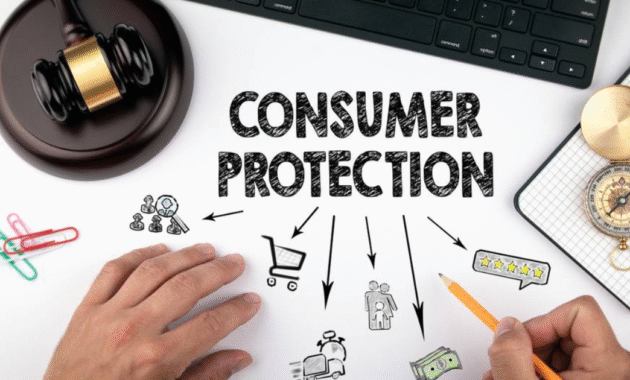Contactless payment technology has dramatically reshaped the way we conduct financial transactions. Whether tapping a credit card at a retail store or using a smartphone to pay for coffee, consumers are increasingly embracing this seamless form of payment. This article explores the evolution of contactless payments, how they work, their benefits and risks, and their broader impact on commerce and consumer behavior.
What is Contactless Payment?
Contactless payment refers to transactions made by simply tapping a card or mobile device near a payment terminal equipped with near-field communication (NFC) or radio-frequency identification (RFID) technology. These payments are completed without physically swiping a card or entering a PIN for small amounts.
Key Technologies Behind Contactless Payment
- NFC (Near-Field Communication): Enables devices to exchange data over a short distance (typically less than 4 cm).
- RFID (Radio Frequency Identification): Used in some cards for wireless data exchange.
- EMV Chips: Provide added security and are embedded in most contactless cards.
- Tokenization: Replaces sensitive card details with unique tokens during a transaction.
History and Evolution of Contactless Payments
The journey of contactless payments began in the 1990s but gained significant traction in the 2010s.
Milestones in Contactless Payment Adoption
- 1997: Mobil introduced Speedpass for fuel purchases.
- 2007: Barclays launched the first contactless cards in the UK.
- 2014: Apple Pay launched, igniting mobile wallet competition.
- 2020: COVID-19 pandemic accelerated global adoption.
How Contactless Payments Work
The process of making a contactless payment involves several quick steps:
- Initiation: User taps card or device near terminal.
- Authentication: Terminal and payment system communicate using NFC.
- Token Exchange: Card information is replaced with a unique token.
- Authorization: Transaction is approved within seconds.
This method eliminates the need to hand over a card or input a PIN, significantly speeding up transactions.
Advantages of Contactless Payments
The rise of contactless payment is largely due to its many benefits for both consumers and merchants.
For Consumers

- Speed and Convenience: Transactions take seconds to complete.
- Hygiene and Safety: No need to touch cash or keypads.
- Reduced Wear and Tear: Cards last longer with fewer physical interactions.
- Integration with Mobile Wallets: Allows for digital storage of cards and loyalty programs.
For Merchants
- Faster Checkout Times: Reduces queue lengths and wait times.
- Improved Customer Experience: Enhances satisfaction with seamless payments.
- Lower Operational Costs: Less cash handling reduces risks and labor.
Security Features of Contactless Payments
Despite common concerns, contactless payment is one of the most secure transaction methods available.
Core Security Mechanisms
- Dynamic Data Exchange: Each transaction uses unique encrypted data.
- Tokenization: Protects actual card information from theft.
- Limited Transaction Values: Most countries set caps for contactless transactions without PINs.
- Biometric Authentication: Used in smartphones (e.g., Face ID, fingerprint) to authorize payments.
Addressing Common Myths
- “Can hackers skim my card?”
- Real-world instances are rare due to strong encryption and short transmission range.
- “What if I get charged twice?”
- Terminals are programmed to accept only one transaction at a time.
Challenges and Risks of Contactless Payments
While offering many benefits, contactless payments are not without potential drawbacks.
Technical Limitations
- Device Compatibility: Not all retailers or countries support NFC.
- Battery Dependence: Mobile wallets require power to function.
Fraud and Misuse
- Lost or Stolen Cards: Unauthorized small transactions can occur until card is blocked.
- Skimming Risks: Though rare, criminals can attempt to read card data using modified NFC readers.
Consumer Concerns
- Privacy Issues: Concerns over data tracking and behavioral profiling.
- Transaction Limits: Low-value caps may hinder use for larger purchases.
Global Adoption of Contactless Payments
Contactless payment adoption varies across the globe, influenced by infrastructure, consumer behavior, and regulatory frameworks.
Leading Markets
- United Kingdom: Over 85% of transactions are contactless.
- Australia: Rapid adoption led by banks and retailers.
- Canada and Nordic countries: High penetration of mobile and card payments.
- Asia (China, South Korea): Dominated by mobile platforms like Alipay and Samsung Pay.
Emerging Markets
- India: Growth driven by UPI and mobile wallets.
- Africa: Contactless growing alongside mobile money platforms.
- Latin America: Adoption rising through fintech innovation and urbanization.
Impact on Consumer Behavior and Commerce
Contactless payment methods are not just technological innovations; they are reshaping how consumers interact with businesses.
Behavioral Shifts
- Impulse Buying: Faster checkouts lead to more spontaneous purchases.
- Reduced Cash Use: Declining reliance on physical currency.
- Brand Loyalty: Integration with rewards programs enhances customer retention.
Business Transformations

- Digital-First Models: Encourages online and app-based shopping.
- Real-Time Data Access: Helps businesses analyze spending patterns.
- Increased Efficiency: Streamlines operations and reduces errors.
Future Trends in Contactless Payments
The contactless payment space continues to evolve with advancements in technology and changing consumer expectations.
Innovations to Watch
- Biometric Payments: Facial recognition and iris scans.
- Wearable Devices: Smartwatches and rings for payment.
- Cryptocurrency Integration: Potential for contactless crypto payments.
- Voice-Activated Transactions: Voice assistants integrated with payment systems.
Regulatory and Industry Developments
- Rising Transaction Limits: To accommodate larger purchases.
- Interoperability Standards: Ensuring compatibility across devices and platforms.
- Data Protection Laws: Stricter privacy and security regulations.
Also Read: 10 Simple Steps To Improve Your Credit Score Fast
Conclusion
The rise of contactless payment represents a convergence of technology, convenience, and security. As consumers increasingly demand faster and safer ways to pay, contactless systems deliver on both fronts. While not without challenges, ongoing innovation and regulatory support are driving broader adoption across the globe. The future of payments is undoubtedly contactless, mobile, and seamless.
FAQs
Q. What is the difference between NFC and RFID?
NFC is a subset of RFID that enables two-way communication over very short distances, making it ideal for secure contactless transactions.
Q. Are contactless payments safe?
Yes, contactless payments are highly secure thanks to encryption, tokenization, and biometric verification.
Q. What is the transaction limit for contactless payments?
Limits vary by country, typically between $30 to $100 without requiring a PIN or signature.
Q. Can I use contactless payment without internet?
Yes, most contactless card payments work without internet; however, some mobile wallets may require occasional connectivity.
Q. What should I do if I lose a contactless card?
Immediately report it to your bank or card issuer. Most banks offer zero-liability protection for unauthorized transactions.